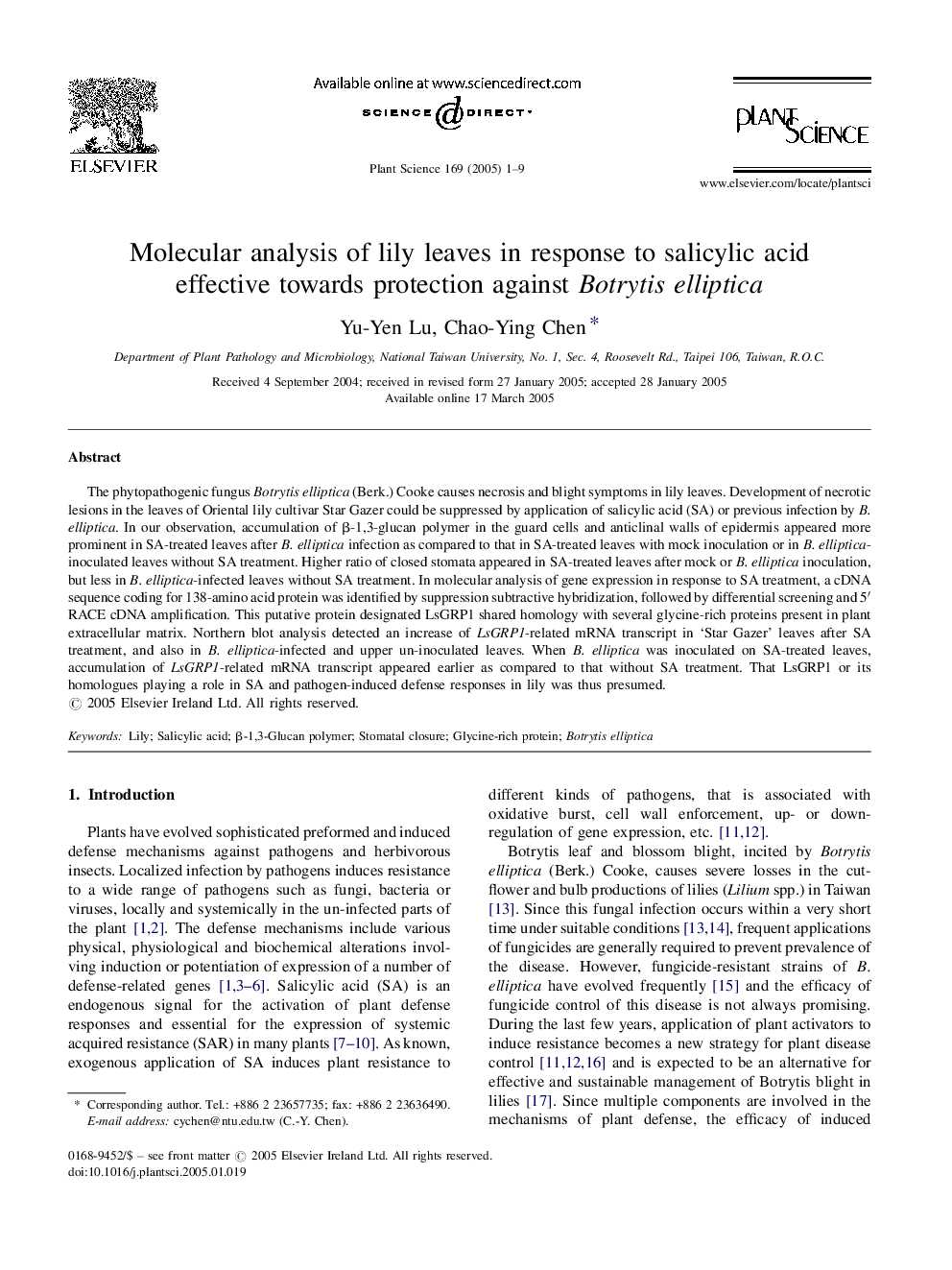| Article ID | Journal | Published Year | Pages | File Type |
|---|---|---|---|---|
| 10841955 | Plant Science | 2005 | 9 Pages |
Abstract
The phytopathogenic fungus Botrytis elliptica (Berk.) Cooke causes necrosis and blight symptoms in lily leaves. Development of necrotic lesions in the leaves of Oriental lily cultivar Star Gazer could be suppressed by application of salicylic acid (SA) or previous infection by B. elliptica. In our observation, accumulation of β-1,3-glucan polymer in the guard cells and anticlinal walls of epidermis appeared more prominent in SA-treated leaves after B. elliptica infection as compared to that in SA-treated leaves with mock inoculation or in B. elliptica-inoculated leaves without SA treatment. Higher ratio of closed stomata appeared in SA-treated leaves after mock or B. elliptica inoculation, but less in B. elliptica-infected leaves without SA treatment. In molecular analysis of gene expression in response to SA treatment, a cDNA sequence coding for 138-amino acid protein was identified by suppression subtractive hybridization, followed by differential screening and 5ⲠRACE cDNA amplification. This putative protein designated LsGRP1 shared homology with several glycine-rich proteins present in plant extracellular matrix. Northern blot analysis detected an increase of LsGRP1-related mRNA transcript in 'Star Gazer' leaves after SA treatment, and also in B. elliptica-infected and upper un-inoculated leaves. When B. elliptica was inoculated on SA-treated leaves, accumulation of LsGRP1-related mRNA transcript appeared earlier as compared to that without SA treatment. That LsGRP1 or its homologues playing a role in SA and pathogen-induced defense responses in lily was thus presumed.
Related Topics
Life Sciences
Agricultural and Biological Sciences
Plant Science
Authors
Yu-Yen Lu, Chao-Ying Chen,
